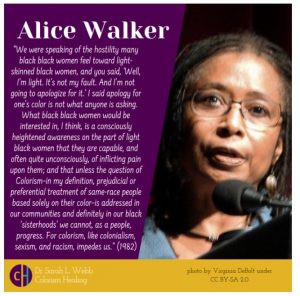Break the Silence of Colorism
Editor’s Note: The Hillsboro Globe is a student-run newspaper that strives to be open and inclusive to all of our Greater-Nashville community.
The mission of the Hillsboro Globe is to establish an inclusive writing environment where students’ experiences are validated and empower young people to voice these experiences through writing.
It is the vision of the Hillsboro Globe to regularly provide safe opportunities across multiple lines of identity for students, teachers, and the community to interact with each other. Conscientiously learning from each other’s differences is our small contribution to breaking the silence of implicit and explicit bias.
Within every community different forms of discrimination exist. One form of discrimination is within sub-groups and between sub-groups who prefenece one over another in favor of lighter skin color. Colorism, a term believed to be first coined in 1982 by Pulitzer Prize winner Alice Walker, was defined by her to mean the “prejudicial or preferential treatment of same-race people based solely on their color.” It can be subtle or overt and exists in black communities, brown communities or cross-culturally.
Colorism refers to a form of discrimination where people who are of lighter skin are regarded as superior, while darker-skinned people are perceived as inferior. While it is not specifically racism, there is a definite correlation. “It is not racism although there is a clear relationship. A clear example of racism would involve a business that refuses to hire black people. Colorism would not preclude the hiring of a black person, but there would be a preference for a black person with a lighter skin tone than a darker-skinned person” as described in a Washington University Law Review article by Kimberly Jade Norwood.
Part 1 – History
This perception that lighter is better is derived from the days of slavery as a way to differentiate between house and field workers. One test measured the color of one’s skin using a common brown paper bag as a way of measuring skin color.
If one was lighter than the brown paper bag, you would be considered a house slave, but if you were darker than it, you would be a field slave.
The discriminatory aspect of the test was introduced by the enslaved house workers having easier tasks and better treatment from their enslavers, while the field workers had more harsh and demanding tasks.
The mixed-race children were born by enslaved women often as the result of sexual assault. While enslavers didn’t officially recognize their mixed-race children, they gave them privileges that dark-skinned enslaved people didn’t enjoy.
Modern-Day Colorism
While slavery has ended, its legacy still remains. A quote from an old childhood nursery sums up the characteristics of colorism very well. It states “If you’re black, stay back; if you’re brown, stick around; if you’re yellow, you’re mellow; if you’re white, you’re alright.” What makes colorism so insidious is that it is practiced within the culture. One can see this throughout society and the media often, with more lighter-skinned black people being represented and portrayed far more than their darker-skinned counterparts. Especially in commercials, movies, television shows, and fashion advertisements.
Effects Throughout the Black Community
The lack of representation of darker-skinned people on TV, in the media, and in advertising perpetuates the problem of colorism. Young people of darker complexions often think of their skin color as negative because there is so little representation in the media they consume. There is also a perception by some of that lighter-skinned people are superior. Stereotypes have developed complicating interactions within and across black and brown-skinned communities. To rid communities of these stereotypes, and create a legacy without bias, all members of the community can break the cycle of discrimination by participating in complex conversations with respect and dignity.
Morgan Graham is a journalist attending Hillsboro High School in the 12th grade. She's a part of the Academy of Global Health and Science and a member...











